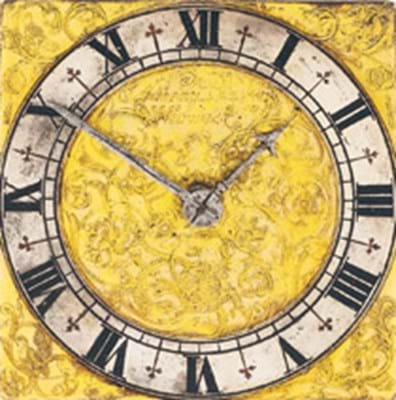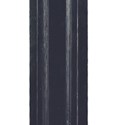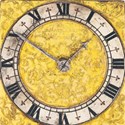When this 5ft 5in (1.55m) high 17th century, weight-driven timepiece by a provincial maker whose work has never turned up at auction got its first airing at Bonhams' New Bond Street rooms on December 11, it drew plaudits and bids in equal measure.
"Everyone who saw it fell in love with it," said Bonhams' specialist James Stratton, who acquired the clock for sale through the company's Knowle branch as part of a deceased estate.
Little is known of the maker, Anthony Blackford, whose signature is on the tiny 31/2in (9cm) square dial. Brian Loomes lists him as a watch maker made free of Warwick in 1669, and an old typed note inside the clock door notes payments in the churchwardens' accounts for St Nicholas parish church, Warwick in April 1676 for keeping the church clock in order.
As a hitherto unrecorded work by a provincial contemporary of such famous names as Fromanteel, East and Knibb, it therefore makes an historically important addition to the horological corpus.
Indeed, Anthony Woodburn, one of the dealers who bid on it, told ATG: "Had it been found 50 years ago, it would have been in all the reference books today."
Its emergence from obscurity raises the possibility that it may never have left the family for whom it was made, but equally important was its exceptionally original condition, with only old improvements to the movement, and the quality of the workmanship with its finely proportioned, slender, floor-standing, architectural ebony case and its beautifully engraved dial with the original gilding.
The nearest comparison in terms of style and period is the ebony architectural cased clock by the sought-after London maker Edward East that sold at Christie's in December 2006 for £310,000, but with no direct precedent on the market it was not an easy piece to estimate.
James Stratton said that if it had been by a London maker like East or a Fromanteel, his task would have been easier, although his £10,000-15,000 estimate was never going to push the envelope.
In the event, three commissions, three phone lines and four or five bidders in the room contested the clock, with the bidding rising to £92,000 (plus 20/12% premium) before the hammer finally fell to Kensington dealers Raffety and Walwyn. Howard Walwyn, delighted to have secured such a rare survivor, deemed "it the finest provincial clock ever to turn up on the market".
By Anne Crane
The stunning clock by an unheard of 17th century maker
The emergence of a significant new discovery is a guaranteed crowd-puller in any sector of the art and antiques market.








